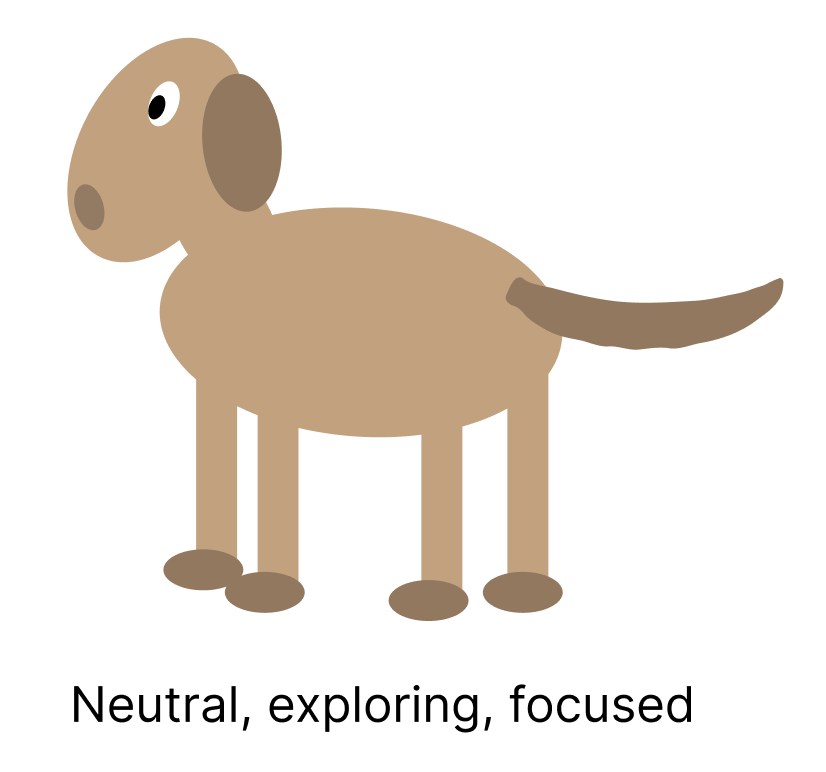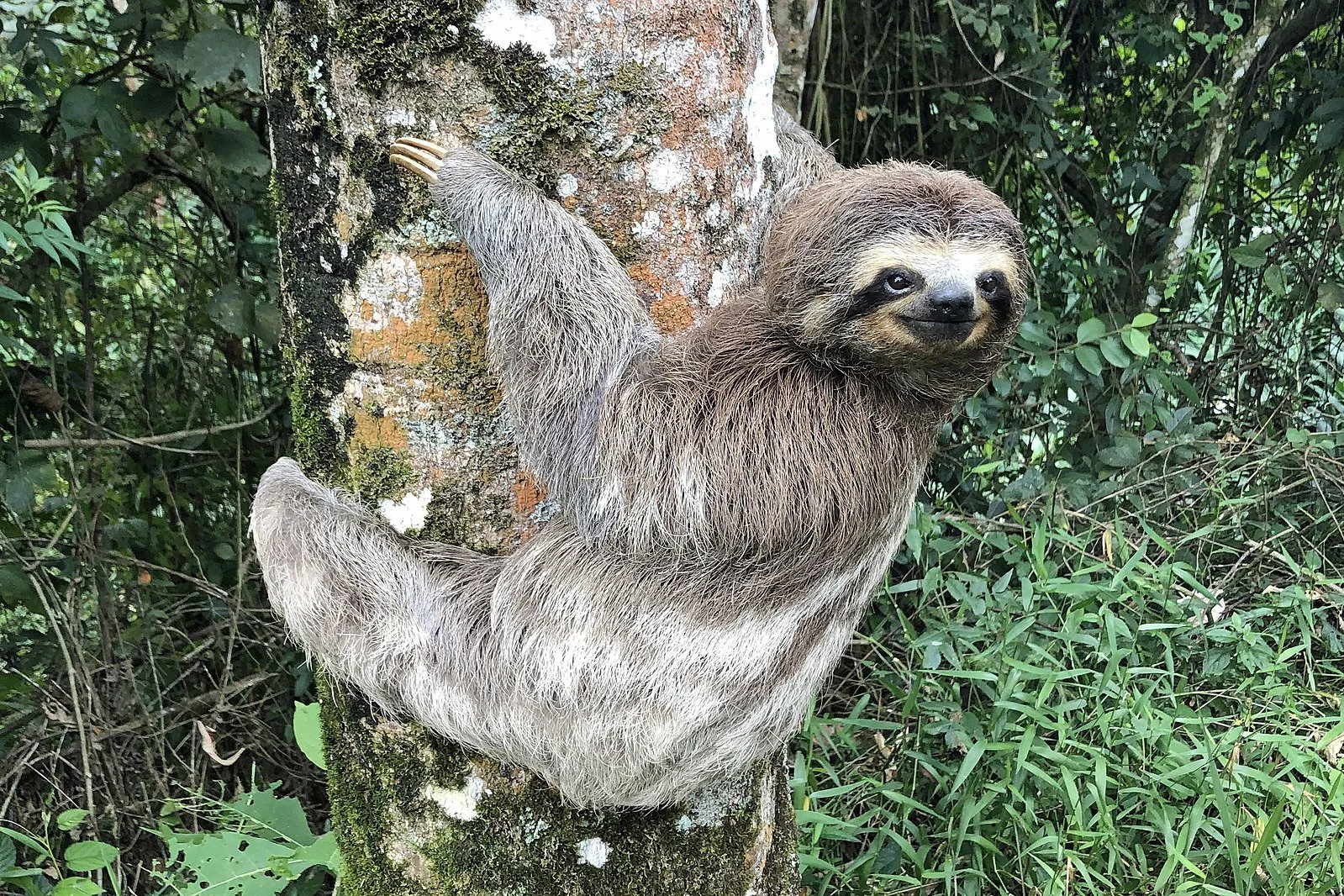Why do dogs wag their tails?
The short answer
A dog mainly wags their tail in order to communicate with different visual cues. Wagging their tails also allows a dog to communicate via scent by stimulating their anal glands in order to release of their natural odor.
The long answer
Human: "Good morning, buddy!"
Dog: *tail starts wagging*
Human: "Who's a good boy?"
Dog: *wags more*
Human: "You wanna go for a walk?!"
Dog: *wags even more vigorously*
Though the original purpose of dogs' tails was to help them balance, their tails have evolved to be a key part of their communication. Dogs wag their tails in order to send both visual and odor signals to other dogs and animals about how they are feeling.
Fun fact: Over the course of evolution, some dogs' tails have become bushier, lighter on the underside, or developed a contrasting black or white tip to make their tails more visible from a distance.
Like how humans can communicate an incredible variety of emotions with our face, hands, and body, dogs can display a wide array of moods and messages with their tails. Generally as the tail gets higher, the dog is feeling more alert, excited, or aggressive. A tail going lower means the dog is feeling more scared, timid, or submissive.
Here are a few ways dogs communicate with their tails visually:
Tail still and upright
When a dog's tail is upright, they are feeling alert, excited, and confident. They may be observing their surroundings and expressing dominance in the presence of others.
Tail wagging in wide strokes
When a dog's tail is wagging in wide strokes at a slow or moderate pace at a lower level, they are showing they are relaxed, feeling happy, and friendly towards other people and animals in their presence.
Tail wagging in short strokes
A dog wagging their tail in a short, slight manner is thought to be reserved for a greeting.
Tail wagging fast and upright
Wagging their tail fast and in an upright position means the dog is very excited about what's happening. The faster the wag, the more excited they feel.
Tail held in a neutral position
A dog holding their tail in a straight line is focused and observing their surroundings. This position is often held when meeting other dogs and they are assessing the friendliness of the other dogs.
Tail low and/or in between legs
A dog holding their tail between their legs or just low to the floor is their way of communicating that they are afraid, feeling submissive in the presence of other animals or humans, or in pain.
Tail high wagging in very short, fast strokes
A dog doing very short, almost vibrating wags in an upright position is communicating that they are about to start running, attack, or fight another animal or person.
Tail wagging to the right
Wagging their tail to the right indicates that the dog is feeling relaxed and comfortable around an animal or person.
This direction may be due to the left side of the brain (which controls the right side of the body) containing more positive feelings.
Tail wagging to the left
Conversely, wagging their tail to the left indicates that the dog is feeling concerned or fearful in the presence of another animal or person.
This direction may be due to the right side of the brain (which controls the left side of the body) specializing in behaviors like withdrawal, energy expenditure, and fear.
How wagging communicates via odor
Interestingly, wagging isn't just a visual cue in dog-to-dog communication. It also allows dogs to communicate using odor (we just can't smell it as well).
Each dog has their own unique scent and they use this scent to communicate with other dogs. Wagging their tail allows a dog to stimulate and spread their scent from their anal glands. A dog holding their tail high and wagging fast will release more of their scent than a dog with their tail low and between their legs.
Curious about how the world works?
Today You Should Know is a free, weekly email newsletter designed to help you learn something new every Friday.
Subscribe today 👇
Check out some other curious questions:
Sources
Coren, S. (2011, December 5). What a Wagging Dog Tail Really Means: New Scientific Data. Psychology Today. https://www.psychologytoday.com/intl/blog/canine-corner/201112/what-wagging-dog-tail-really-means-new-scientific-data
LLC, A. (n.d.). Why Do Dogs Wag Their Tails?. Doghealth.com. https://www.doghealth.com/behavior/how-and-why/1905-why-dog-wag-their-tails
Llera, R., & Buzhardt, L. (n.d.). Interpreting Tail Wags in Dogs. VCA Animal Hospitals. https://vcahospitals.com/know-your-pet/interpreting-tail-wags-in-dogs
Wild Earth. (n.d.). Why Do Dogs Wag Their Tails? The Science Behind Tail Wagging. Wild Earth. https://wildearth.com/blogs/dog-knowledge/why-do-dogs-wag-their-tails/
YouTube. (2020). Interpret Dog Tail Wags: How to Understand Dog’s Body Language. Jaw-Dropping Facts. Retrieved December 31, 2023, from https://www.youtube.com/watch?v=j9yc0PPXAFg.













It’s like an American accent but with calendars.